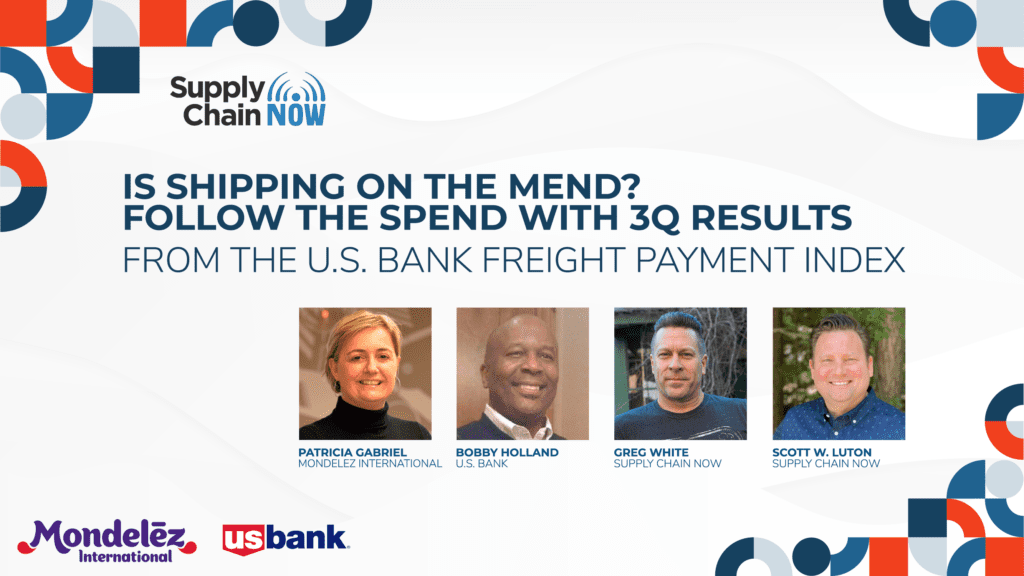
The New Guard: Three Supply Chain Influencers to Watch
“The term ‘influencer’ has become quite ubiquitous in the online space, especially in social media marketing. What was previously being done by celebrities is now taken over by regular people with large followings on social media platforms,” said Influencer Marketing Hub.
The Denmark-based company says it “specializes in producing how-to guides, courses, and research reports in the social media and influencer marketing industry.”
How far we’ve come – to the point where there’s an actual influencer marketing industry.
Influencer Marketing Hub did say that industry experts and thought leaders “can also be considered influencers in their respective industries. These key opinion leaders have gained respect because of their qualifications, position, or experience in their topic of expertise.” It added that “the opinions of these influencers hold significant weight regardless of their social media follower count.”
Supply Chain Media is Transforming to Fit the Needs of a Changing Industry
Thankfully, it is the industry experts and thought leaders who are influencing supply chain media rather than TikTok “stars” and the Kardashians. There is now a wealth of supply chain-focused programming keeping industry professionals abreast of the latest trends and innovations.
Three Supply Chain Influencers to Watch
Vin Vashista, Sofia Rivas, and Casey Larkin are three leading supply chain influencers. We asked each of them: What do you see as the most pressing issue facing today’s supply chain professionals?
Vin Vashishta
“Do you have the right data, and is it delivered in the context of your workflows? Supply chain professionals deal with complexity and uncertainty. Data reduces uncertainty if it’s accessible when they need it,” said Vin Vashishta, author of “From Data to Profit,” a playbook for monetizing data and AI.
Vashishta is the founder of V-Squared, one of the first data and AI consulting firms. He has nearly 30 years of experience in strategy, leadership, software engineering, and applied machine learning.
“Data and analytics must be integrated into supply chain applications versus living in a separate app or platform,” he said. “AI manages complexity, like seeing three to 12 months ahead for long-term planning or risk mitigation. AI must be a reliable augmentation layer. People are irreplaceable, and AI can’t take over critical decisions. Data and AI platforms must fit the technology into your workflow, not force you to change your work to fit the technology.”
Sofia Rivas
“Apart from finding ways to stay current with industry changes and keeping up with the evolution of skills required, a pressing issue is finding time to define a clear career path,” said Sofia Rivas, a self-described supply chain ambassador. “Very few supply chain professionals dedicate time to plan their careers, mainly due to the time and energy constraints of their day-to-day lives. Not making the time to define what you want for your future hinders the opportunities to grow into leadership positions where you can move the needle.
“Today, C-level decision-making is missing out on the expertise and holistic E2E perspectives that supply chain professionals bring to the table,” she said.
Rivas is the supply chain network design and optimization manager on HP’s global supply chain and logistics team. She has been recognized as a Linkedin Community Top Voice in Supply Chain Management; an Emerging Leader in Supply Chain by CSCMP 2024; one of the Top Women in Supply Chain by Supply & Demand Executive 2023; and one of the Coup de Coeur Global Women Leaders in Supply Chain by B2G Consulting in 2021.
Casey Larkin
“Let’s not get it twisted – the name of the supply chain game is asset utilization,” said Casey Larkin, a sales executive for freight data company Farelanes LLC and supply chain marketing firm The Robinson Agency and co-host with Brush Pass Research’s Kevin Hill of the podcast Dude, What’s the Bid? “I have a hunch the winners of the supply chain innovation wars of the 2030s will be those that stage inventory, procure capacity, and react to trends in ways that limit their exposure to transportation and logistics as the most variable COG on their income statements.
“If we want to iron out those massive swings in transportation and logistics costs, we need to better utilize the assets at our disposal, rolling or otherwise. I think the hard part will be identifying what tech needs to be adopted and what processes need to be changed in order to limit our companies’ exposure to the freight market swings and better predict future earnings for investors in public sectors,” he said.
Larkin made his first freight sale moving Kellogg’s cereal as a brokerage team intern at Transplace, where he went on to serve as executive assistant to the CEO. Larkin later brought together such companies as Oracle, FedEx, UPS, SAP, and Accenture for the development of data standards through the Blockchain in Transportation Alliance (BiTA). Before joining Farelanes, he was the sales manager for FreightWaves’ media team, growing annual revenue from $1 million to $20 million.
Supply Chain Now Gives Influencers a Platform
Supply Chain Now is the voice of supply chain, providing a platform for new influencers as well as industry veterans. Our supply chain podcast hosts and guests are actual industry practitioners, and we focus on the stories and challenges they face on the job every day.
Our industry-leading podcasts include:
Check out these and other podcasts. Listen now.
More Articles

FreightTech Round-Up: 9 Solutions Changing the Game

